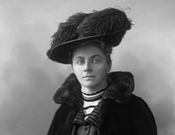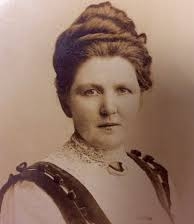
A Cornish Almanack When Cornwall Shook the World This volume comprises a day-to-day calendar for a Cornish year but extending over more than 800 years. It records major events or the birth or death of someone who made an impact in Cornwall or elsewhere. A Cornish Almanack recounts financial and sexual scandals, political intrigue as well as the births and deaths of artists, scientists and politicians who had close connections to Cornwall. There is one event, birth or death for every day of the Cornish year. Read the entire volume, day by day, here. Preview the entire volume on Google Books or buy the volume here:
|
|
Although nowadays seemingly a quiet place, Cornwall has always produced radicals exemplified by the Prayer Book Rebellion, the Cornish Rebellion and individuals such as Emily Hobhouse (pictured top left) who exposed the appalling treatment of wives and children of Boer fighters in the British concentration camps of the early 19th century and the suffragist, Selina Cooper (pictured below left) who became the first elected representative of the Independent Labour Party. Militarily, Cornwall was the scene of the last siege of a domestic premises in England, Fowey supplied more vessels than London to blockade Calais and supplied countless men in wars with the French. Sir Arthur Quiller-Couch raised a regiment of 1,800 men to fight in the First World as Duke of Cornwall's Light Infantry 10th Batallion (Cornwall Pioneers). It was the home of the one of the earliest airship bases of the First World War (RNAS Mullion), RAF Predannack which engaged in anti-submarine warfare in the Second World War and RAF Portreath which became one of the first nuclear monitoring stations in the country in the Cold War and a chemical weapons base. RNAS Culdrose (HMS Seahawk) was established after the Second World War as a satellite to RNAS Predannack but the roles are now reversed. Culdrose has over four thousand force and civilian staff and Predannack is now used for flight training, glider flying, fire rescue and has as astoniching number of redunant and now largely derelict aircraft. Porthcurno which is now the site of an excellent museum is the site of many trans-Atlantic cables and communication cables from Europe. It was also used for radio monitoring in both world wars.
| ||||


